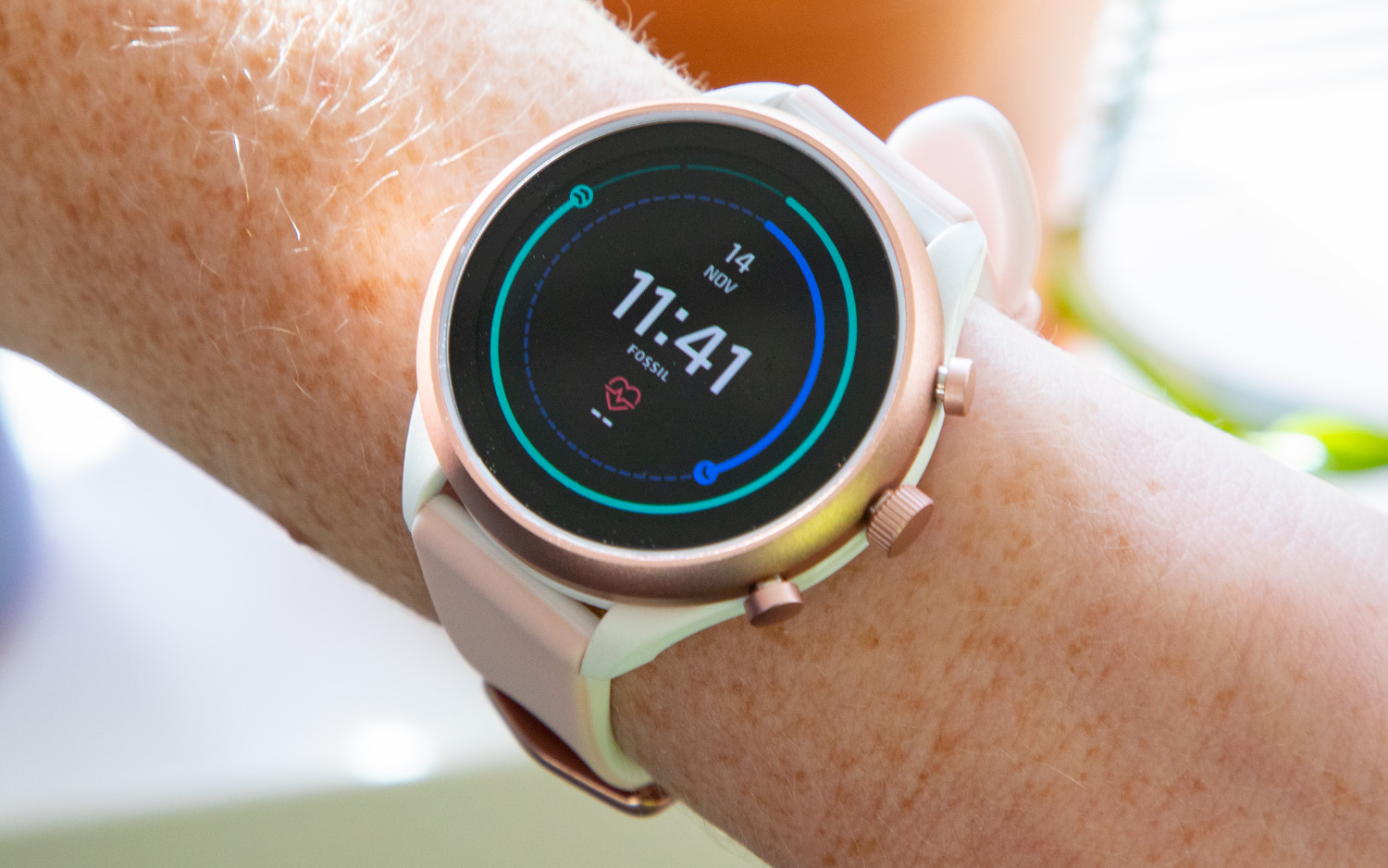Tom's Guide Verdict
If you want to give Wear OS a try, the Fossil Sport is a good deal at less than $100.
Pros
- +
Stylish, lightweight design
- +
Improved battery life
- +
Ambient mode brings more personality to display
Cons
- -
Google Fit needs work
- -
Performance still lags in some spots
Why you can trust Tom's Guide
When it debuted in 2018, the Fossil Sport was one of the first Wear OS smartwatches with Qualcomm's Snapdragon Wear 3100 processor, which brought with it faster performance and somewhat better battery life.
At the time, this sport-focused smartwatch cost $275. Since then, its price has dropped to $99, and Wear OS, though still not our favorite smartwatch operating system, has made some improvements. Even now, the Fossil Sport remains a very elegant timepiece, and with built in GPS and water-resistant enough for swims, it's one of the best cheap smartwatches you can buy.
Fossil Sport: Price and availability
The Fossil Sport debuted in the fall of 2018 at a price of $275; it's now available for $99. The 43mm model comes in Smokey Blue with Smokey Blue Silicone Band, Black with Black Silicone Band, and Navy with Navy Silicone Band. The 41mm model comes in Blush with Blush Silicone Band and Black with Black Silicone Band.
Fossil Sport: Specs
| Row 0 - Cell 0 | Row 0 - Cell 1 | Row 0 - Cell 2 |
| Size | 41, 43 mm | Row 1 - Cell 2 |
| Display | AMOLED touchscreen | Row 2 - Cell 2 |
| GPS | Yes | Row 3 - Cell 2 |
| Heart rate monitor | Yes | Row 4 - Cell 2 |
| Water resistance | 164 feet | Row 5 - Cell 2 |
| Battery life | 24 hours | Row 6 - Cell 2 |
| Works with | Android, iOS | Row 7 - Cell 2 |
| NFC | Yes | Row 8 - Cell 2 |
| Wireless | Wi-Fi, Bluetooth | Row 9 - Cell 2 |
Fossil Sport: Design
Fossil has been churning out stylish Wear OS watches for years, but it was focused more on fashion than on function. Past Fossil watches have included built-in GPS and heart-rate sensors for more accurate workout-tracking, but with design elements like crystals and stainless steel bracelets, they weren't exactly designed with workouts in mind. With Fossil Sport, Fossil has created a smartwatch that's incredibly comfortable to wear while working out, but also looks good enough to wear out on the town.
The first thing I noticed about the Fossil Sport is how lightweight it is, especially compared with other Fossil watches I've tested in the past. The 41mm model weighs in at 0.88 ounces, a huge improvement over the 1.23-ounce Fossil Q Venture HR. The Sport also comes in a larger 43mm size, which makes it more appealing to a wider variety of people. I found the 41mm to be the perfect size for my small wrist.
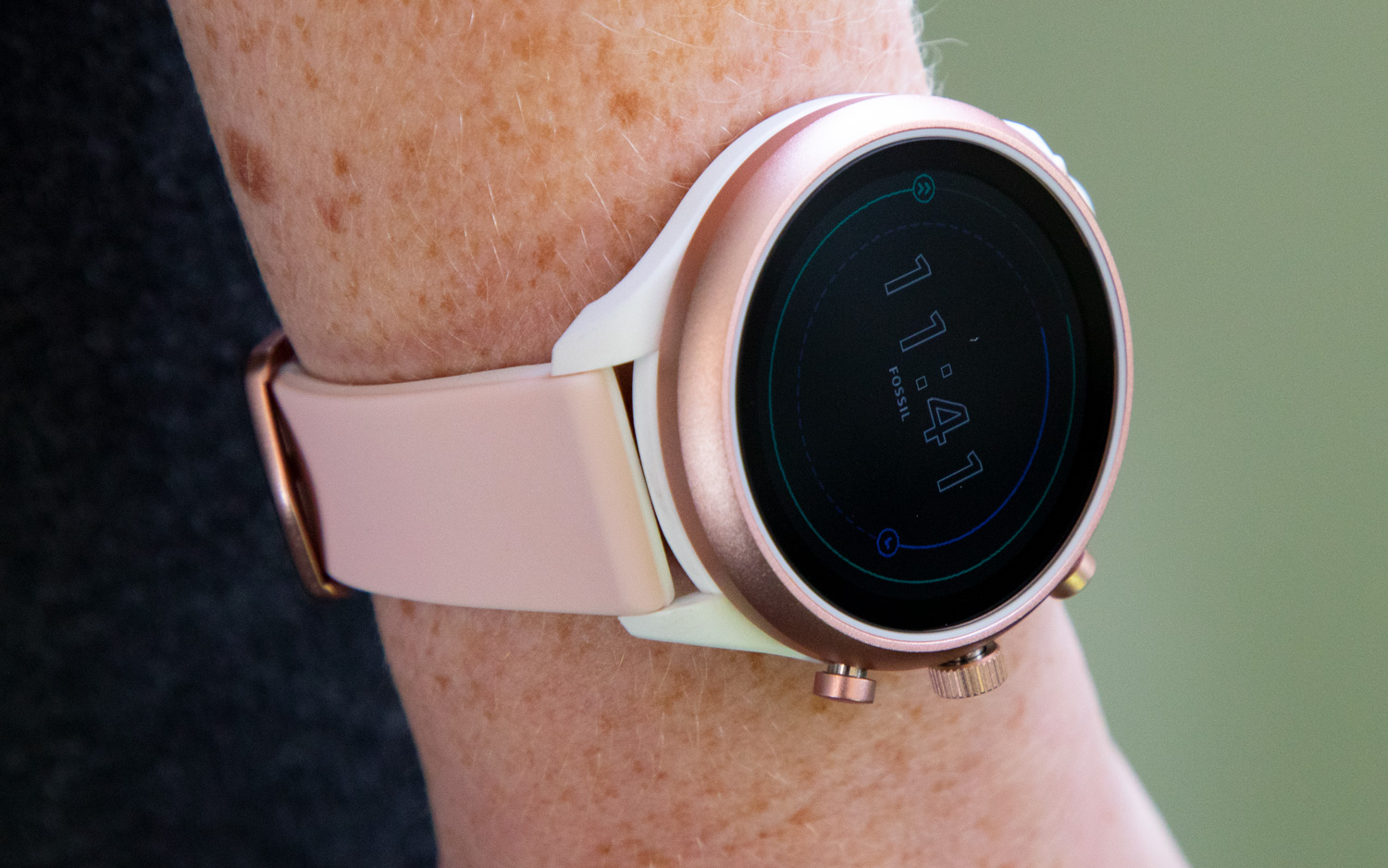
The rose-gold aluminum model with white nylon trim that I tested easily transitioned among all of the activities on my plate during the week: work, spin class, early morning runs and a bachelorette party on Bourbon Street in New Orleans where the bride requested we wear black cocktail attire. Some smartwatches look too much like little computers to work in a variety of situations (I wouldn't wear an Apple Watch to a fancy event, for instance, but I would wear a Fossil).
Fossil Sport: Performance
The Fossil Sport is one of the first smartwatches to run on the Qualcomm's latest Snapdragon Wear 3100 chip. The new CPU uses a co-processor to offload lightweight tasks, such as telling the time, to conserve power and battery life for workouts. I noticed a slight reduction in lag, which often occurred on older Wear OS watches when opening an app or saving a workout.
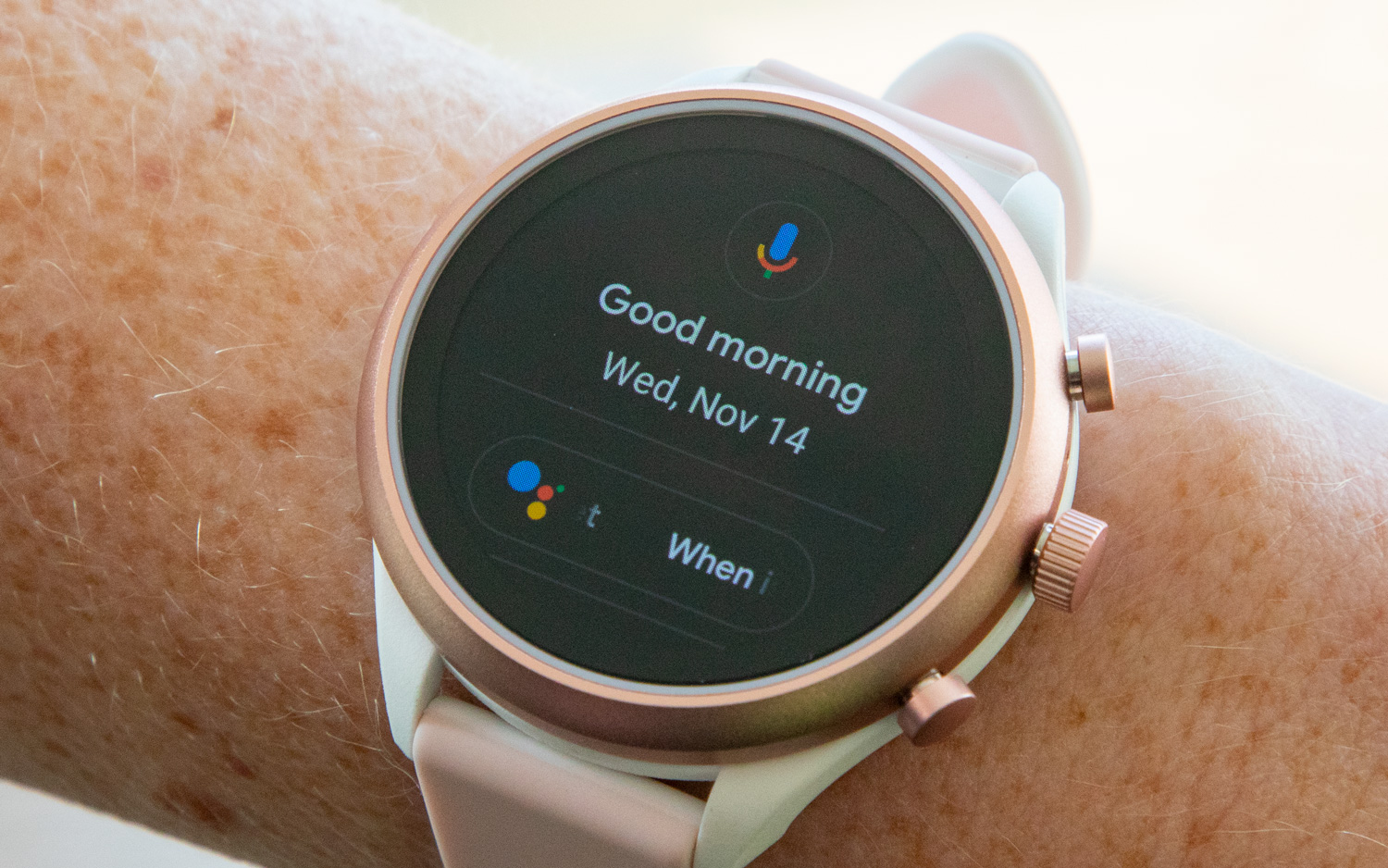
But 3100 didn't improve performance as much as I had hoped. Google Assistant doesn't start listening as quickly as I would like it to when I press the crown to call it up, although the answers to my questions were displayed almost instantly on-screen. (The Sport has a microphone for querying Google Assistant, but does not have speakers.) On the Apple Watch, Siri starts listening as soon as I raise my wrist, and the difference in response times is noticeable.
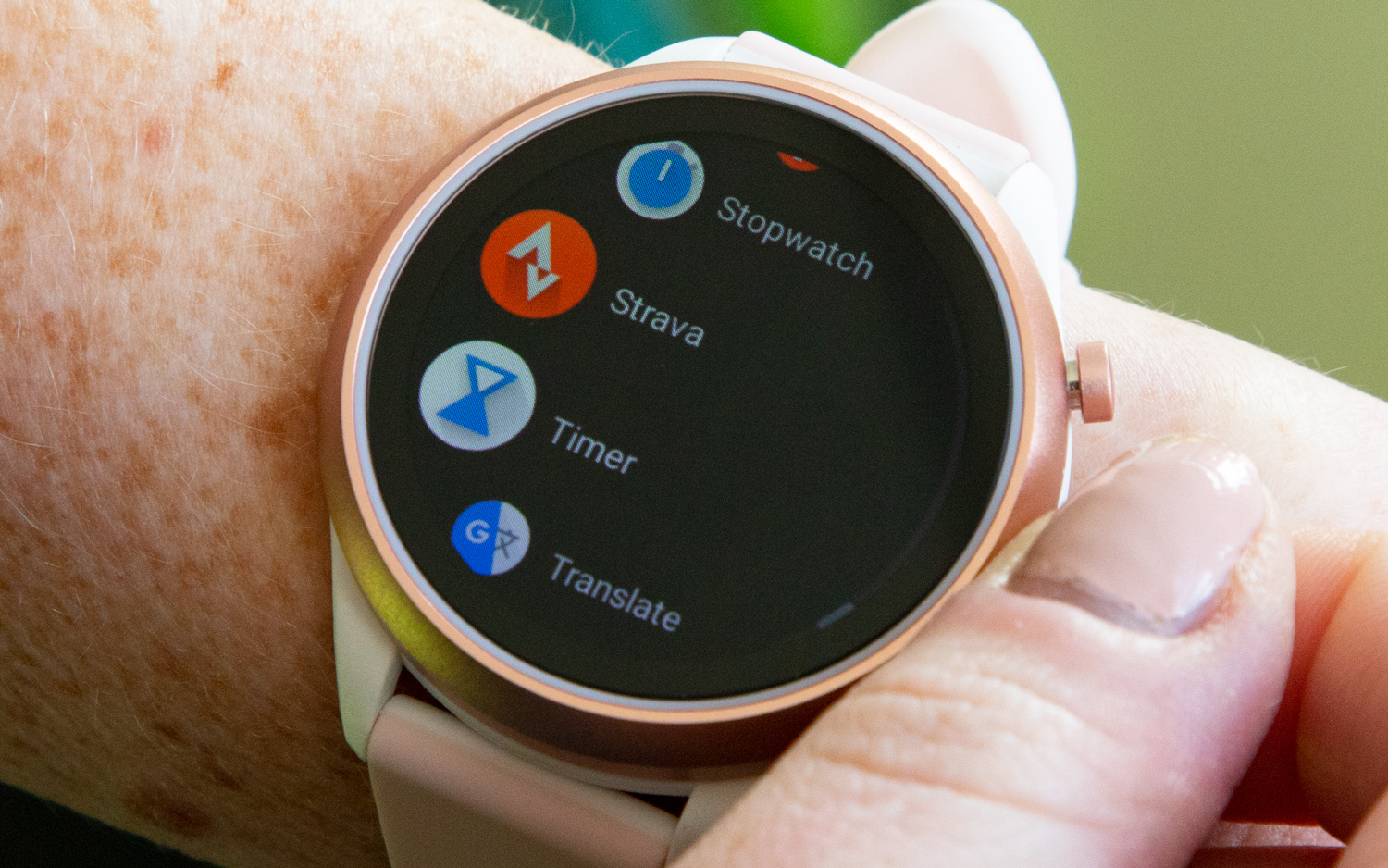
I opened the Play Store on one occasion to install an app, and it took 30 seconds to load, complete with a green spinning wheel. Opening more intensive apps, such as Google Maps and Uber, was an exercise in futility — it took minutes for each app to load my current location on a map, despite being connected to both my phone and my home Wi-Fi network. I would chalk that up to the GPS antenna's struggles indoors, but the watch was relying on my phone's GPS, which it locked onto right away when I began a run in Google Fit.
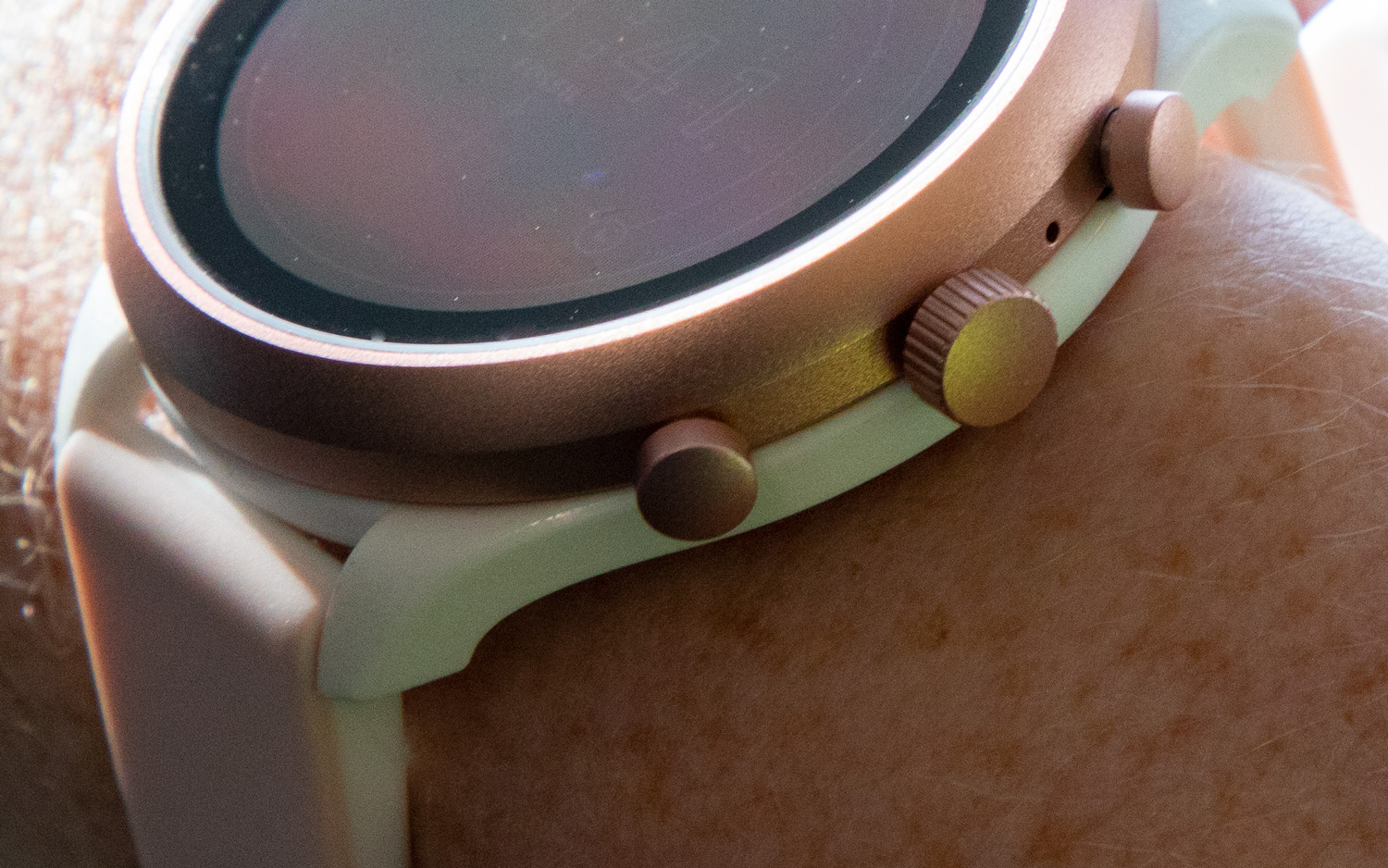
I thought the new processor would transform Wear OS watches, but maybe the issues are deeper than chip architecture. The 3100 chip’s co-processor does enable a few cool new features, such as a new Ambient Mode that keeps the time always on the display. It's not even limited to grayscale — depending on which watch face you choose, colorful elements make their way to the ambient face, so it has more personality when you're not looking at it. Other smartwatches, including the Apple Watch, go dark when not in use. The always-on time makes Fossil Sport feel like a real watch.
Fossil Sport: Battery life
And battery life is much improved with the new processor — the Sport can make it through 24 hours on a charge, up from about 18 hours, including workouts. A Battery Saver mode enabled by the 3100 can help you squeeze out a whole week on a charge, though you have to sacrifice smartwatch features to tell time. There are no built-in sleep-tracking features, so you'll still find yourself charging up nightly. The Sport supports quick-charging with a magnetic charger, which is convenient. In 35 minutes, the model I tested charged up from 13 percent to 65 percent.
The longest-lasting Android smartwatch we've tested is Samsung's Galaxy Watch, which runs on Tizen OS. We were able to get four days of battery life on a charge.
Fossil Sport: Interface
Fossil isn't a technology company; it's a watchmaker that makes stylish timepieces for all demographics. Its touch-screen smartwatch lineup runs the gamut, from the fashion-forward Kate Spade women's smartwatch to the rugged Diesel smartwatch designed for outdoorsy dudes. Fossil Sport is somewhere in between.
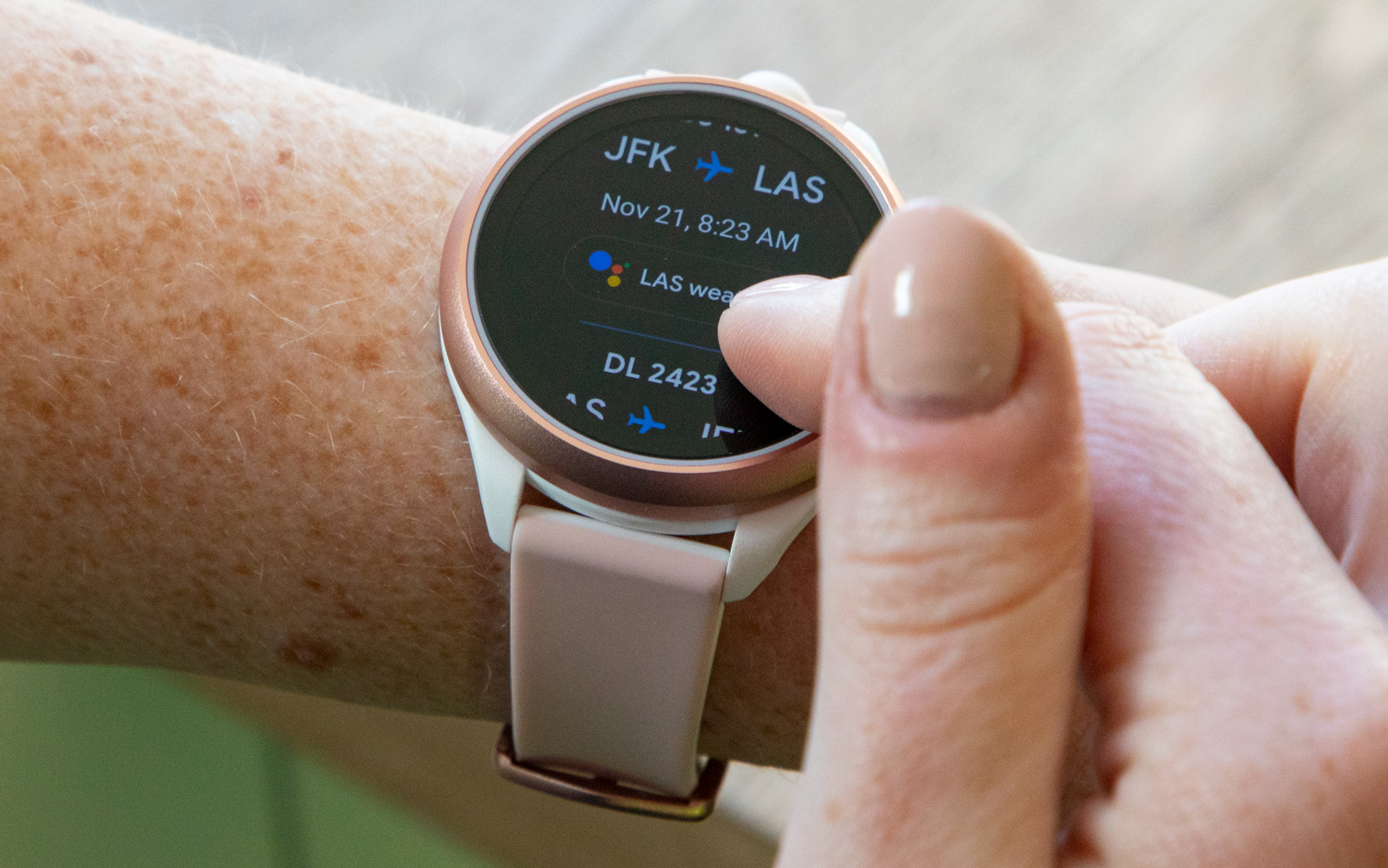
Google encouraged its hardware partners, including Fossil, to add more features to smartwatches based on user feedback. Fossil included GPS, NFC and a heart-rate sensor in the Sport. Though Fossil designed a few fashionable watch faces to choose from, the software is pure Google. That's not a bad thing, especially after the Wear OS overhaul that drastically improved the interface.
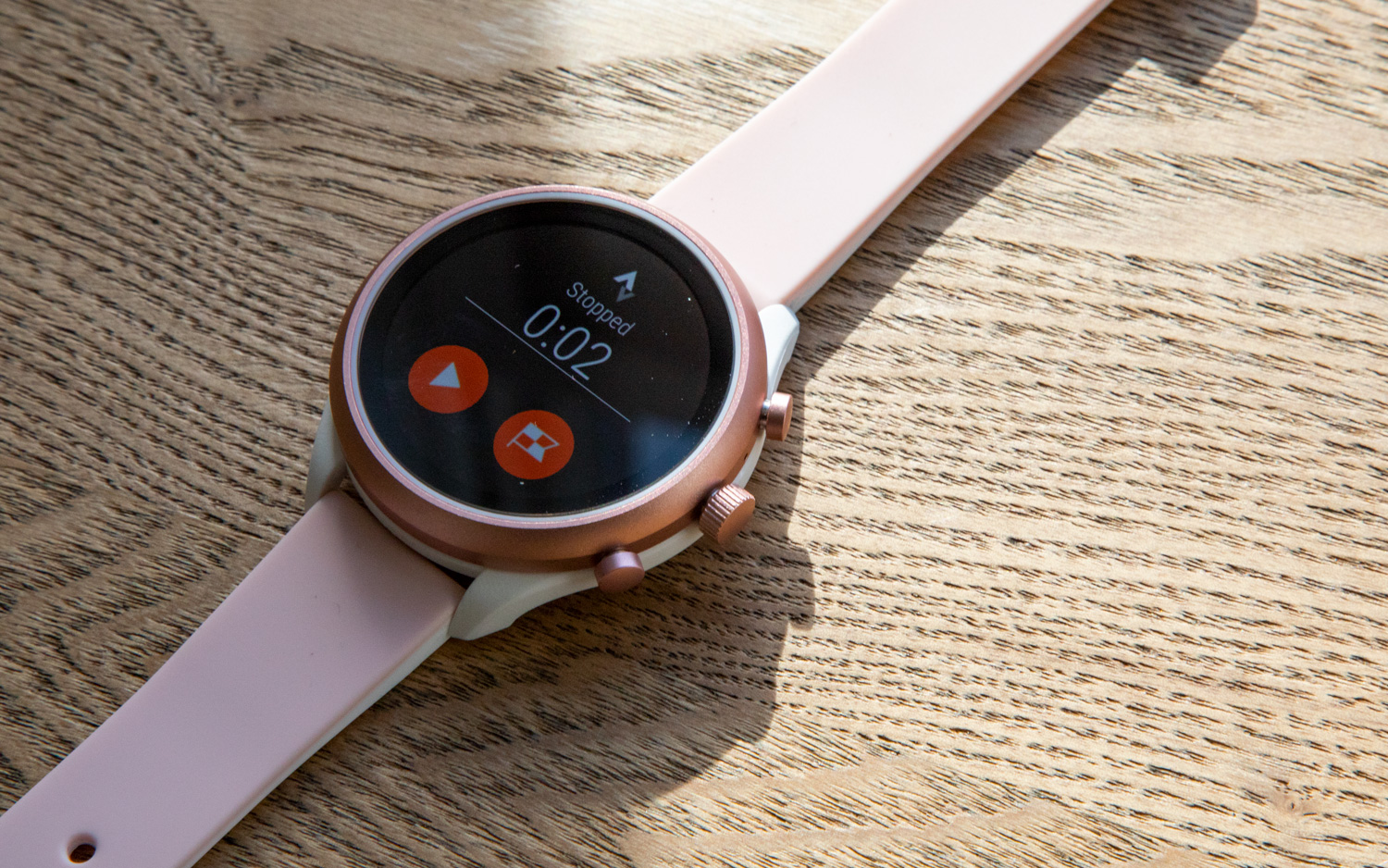
Stand-alone GPS, an NFC chip, a heart-rate sensor — those are all great features, but ones we (or at least I) have come to expect from a watch that costs more than $250. It's tough to be impressed by an OS that's playing catch-up to the competition. The Apple Watch Series 5 has an electrical heart-rate sensor for on-the-go electrocardiograms you can share with your doctor for diagnosing atrial fibrillation. Sure, that watch is expensive (starting at $399 for the smaller version), but even the $199 Apple Watch Series 3 offers advanced health and fitness features, such as high and low heart-rate alerts and a forthcoming notification for abnormal heart rhythms that's been cleared by the FDA. The Series 3 is also speedier.
MORE: The Doctor on Your Wrist: How Smartwatches Are Saving Lives
Maybe the comparison isn't entirely fair, but now that we've seen what smartwatches are capable of, Wear OS watches seem basic for what they cost.
Fossil Sport: Fitness features
For a fitness-focused watch, Fossil Sport should be more sophisticated when it comes to tracking fitness.
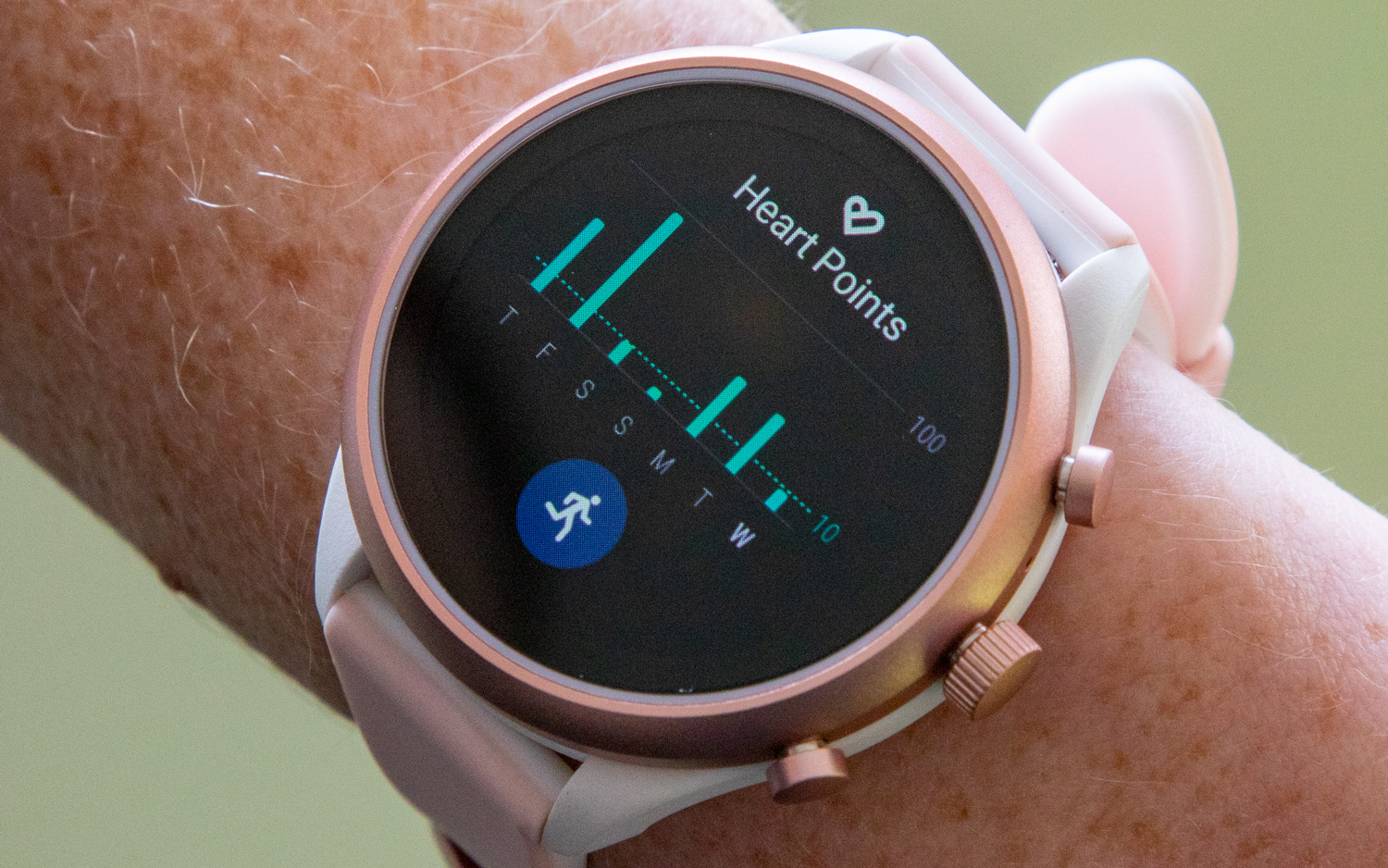
Sport comes with Google's built-in fitness app, Google Fit, and the ability to install third-party fitness apps for Wear OS, such as Runtastic and Strava. (More on those in a minute.) The new version of Wear OS uses Heart Points and Move Minutes to indicate something about your daily activity goals, and while I get the overall idea, I don't find either of those metrics very useful. When you swipe left on the watch face, you'll see two octagonal rings: green for Heart Points, and blue for Move Minutes. You can scroll down to see more relevant information, like steps walked, mileage covered, resting heart rate and peak heart rate. Heart-rate zones and activity-sharing would be useful.
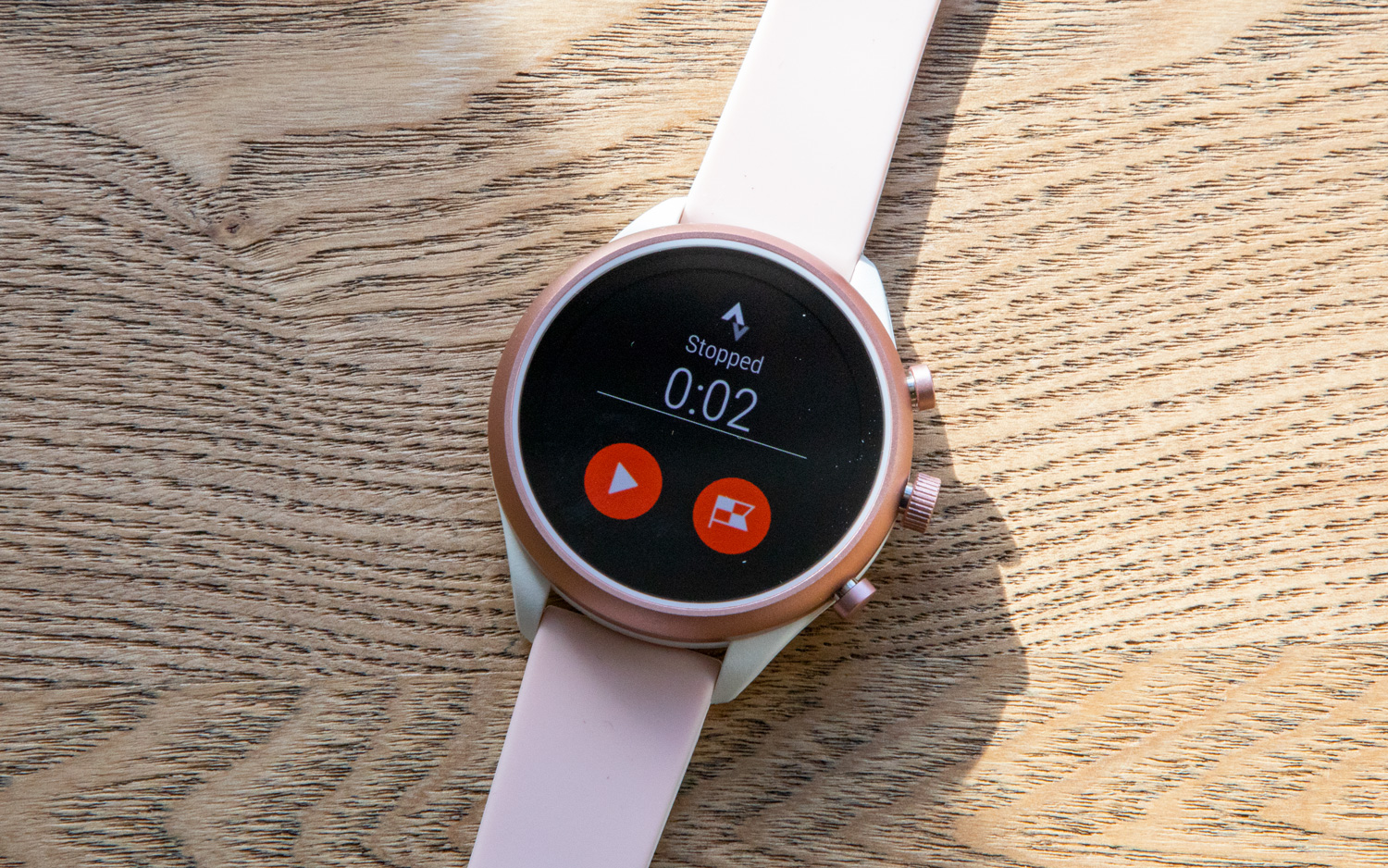
From that screen, you can launch Google Fit. The app offers a slew of workouts to choose from, including badminton, CrossFit and flossing (as in the Fortnite dance, not the dental hygiene practice). However, the app isn't actually tracking reps for most of those workouts, or however else you would measure flossing. It simply uses your heart rate to calculate how many calories you've burned.
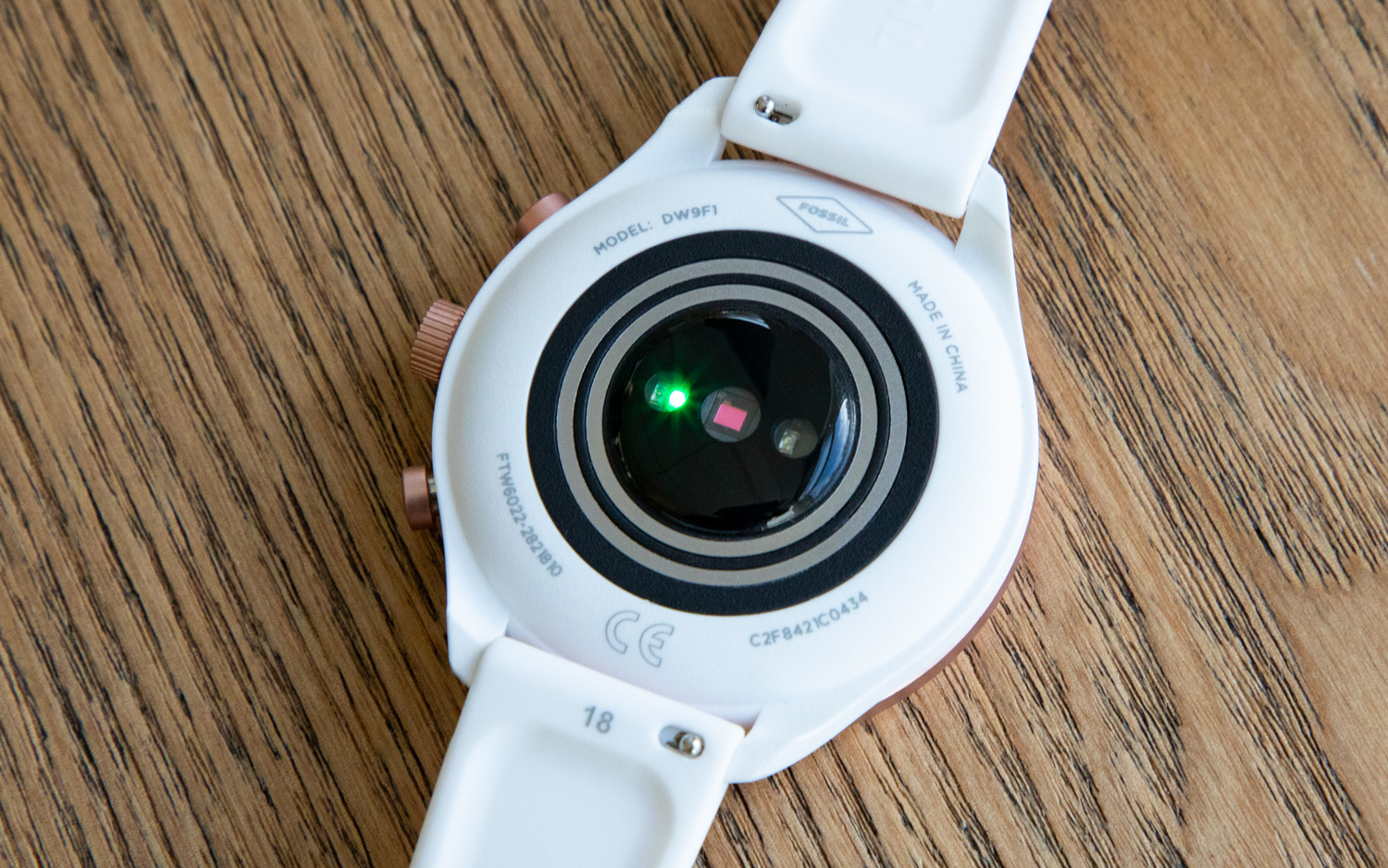
Google Fit is a little more useful when tracking running or spinning, which are my go-to workouts. But Strava is the best fitness app for Wear OS, at least when it comes to tracking running and cycling, because it gives you more detailed information than Google Fit does. For instance, Strava will tell you your split pace on a run, and Google Fit doesn't. Strava workouts also save more quickly than Google Fit workouts, for some reason.
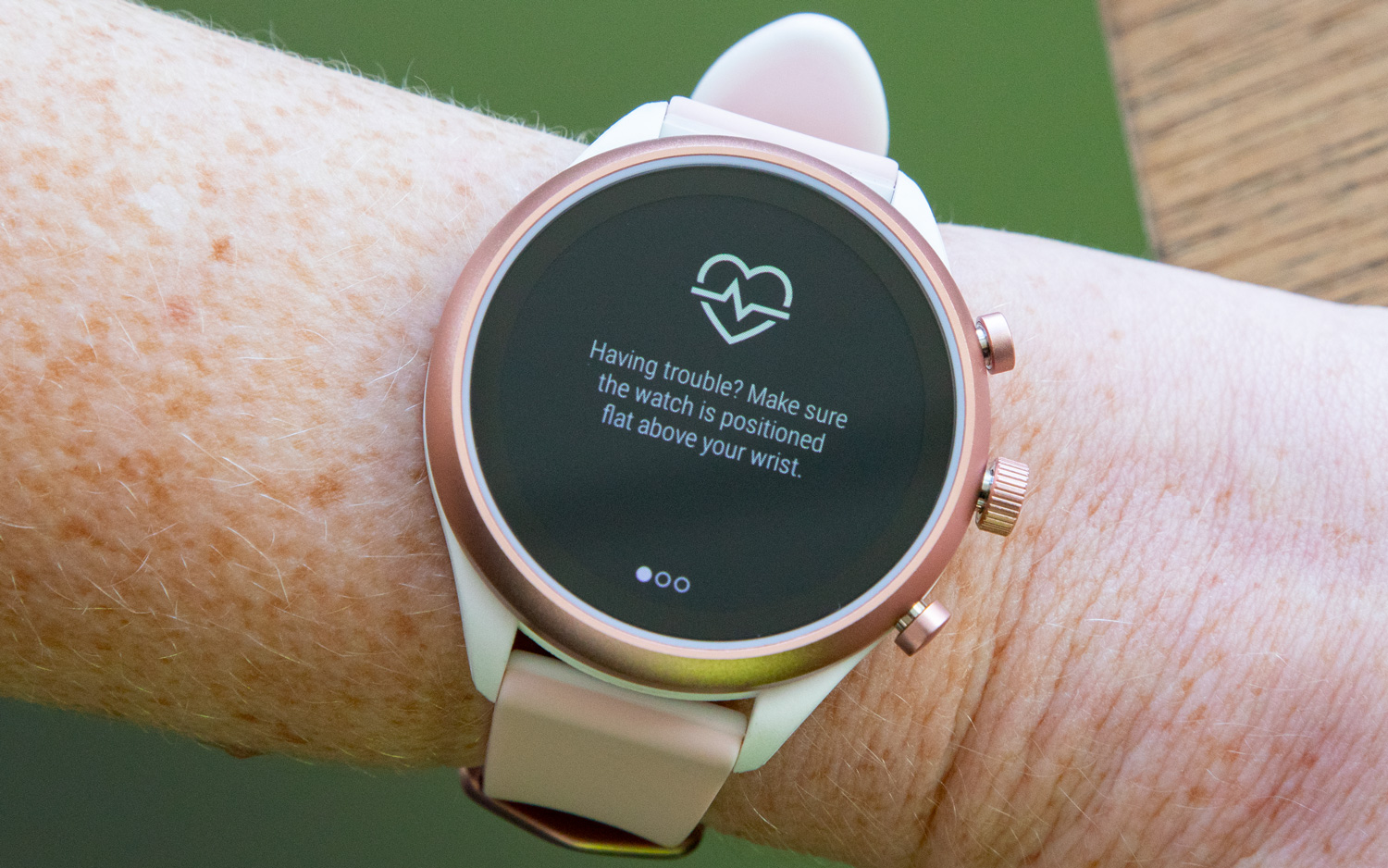
Fossil Sport's GPS and heart-rate measurements were accurate, in my testing. I wore a Polar H10 chest strap to compare heart rates during a 3-mile run, and Fossil Sport's average heart rate was 1 BPM off from the Polar reading (166 compared with 167 BPM). The Sport calculated a higher max BPM of 185, compared with the Polar's 180 BPM max, so it wasn’t 100 percent accurate, but still fairly close.
MORE: Who Has the Most Accurate Heart Rate Monitor?
Snapdragon Wear 3100 will gain more advanced fitness features in a sport-focused update coming next year, Qualcomm has said, which means Fossil Sport is future-proofed. I hope Google Fit becomes more advanced with future updates, too, which would make this watch a more appealing rival to Apple Watch.
Samsung's Galaxy Watch is a more capable fitness tracker than Fossil Sport, with more metrics tracked while running and the ability to automatically log exercise without launching the workout app.
Fossil Sport: Verdict
When it first came out, we felt that the Fossil Sport was one of the best Wear OS watches available, thanks to its improved processor, lengthier battery life and stylish, lightweight design. But Wear OS then and now is still lacking when it comes to fitness features, particularly when compared to Apple's watchOS or Fitbit’s OS, which offer much deeper analysis of your workouts.
Among the best cheap smartwatches, we prefer the Apple Watch Series 3 and the Samsung Galaxy Watch Active, but both of those are $100 more than the Fossil Sport, which, at $99, is a bargain — and a fashionable one at that.
Caitlin is a Senior editor for Gizmodo. She has also worked on Tom's Guide, Macworld, PCWorld and the Las Vegas Review-Journal. When she's not testing out the latest devices, you can find her running around the streets of Los Angeles, putting in morning miles or searching for the best tacos.
